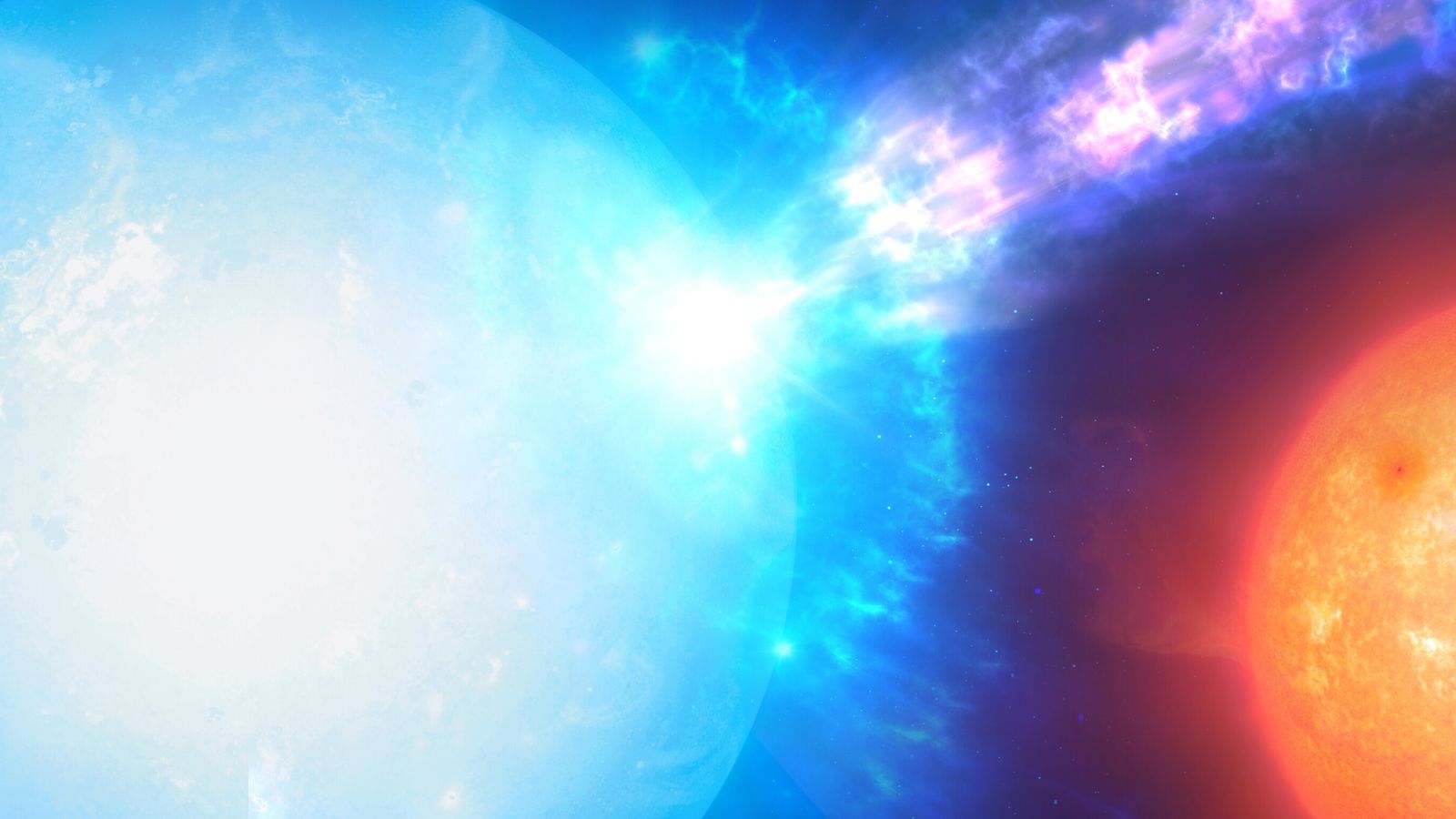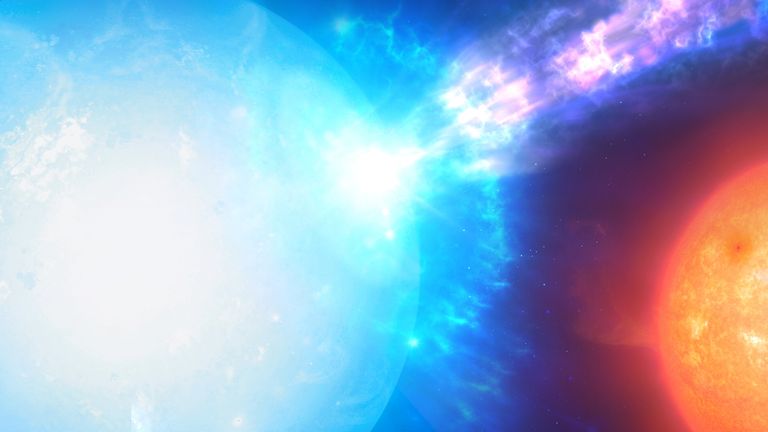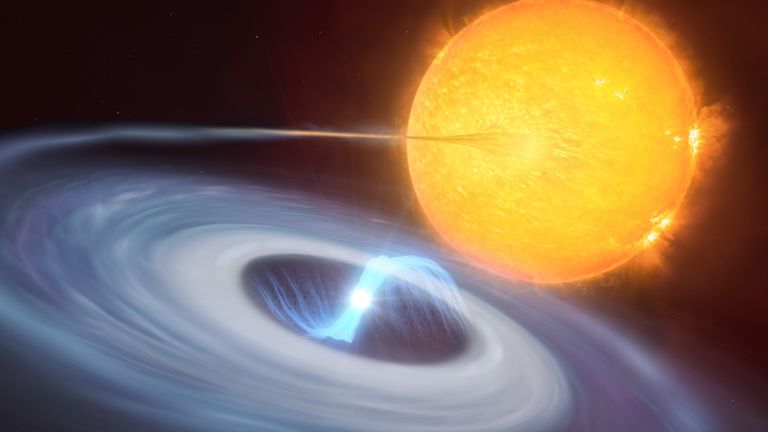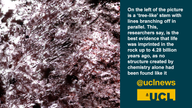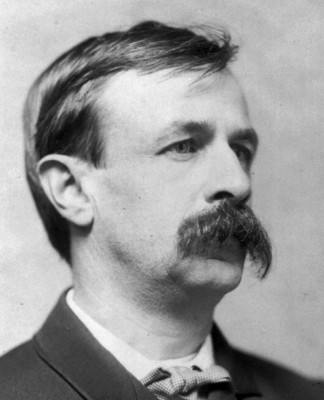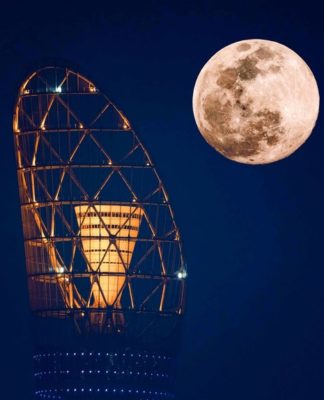New type of stellar explosion discovered could change our understanding of eruptions in stars
Researchers said the blasts from micronovae are extremely hard to observe as they are smaller and shorter than novae and supernovae.
Wednesday 20 April 2022 17:02, UK
A newly-discovered stellar explosion could change the understanding of how eruptions in stars occur, astronomers have said.
A micronova is a blast that lasts for just a few hours and could be commonplace in the universe, but they are difficult to observe.
Explosions take place on the surface of certain stars and can quickly burn through huge amounts of material – the equivalent of around 3.5 billion Great Pyramids of Giza.
A team of researchers led by Durham University observed the phenomenon in three white dwarfs, which are the remnants of dead stars, as they fed in each case on a companion star.
The findings could lead to more miconovae being found and might challenge the current understanding of thermonuclear explosions in stars, scientists said.
The blasts are extremely powerful but they are small on astronomical scales compared to novae and supernovae, which are extremely bright and have been known about for centuries.
Throughout history there have been several accounts of new stars being seen by astronomers, which we now refer to as novae.
Lead author Dr Simone Scaringi, in the Centre for Extragalactic Astronomy at Durham University, said: “The phenomenon challenges our understanding of how thermonuclear explosions in stars occur.
“We thought we knew this, but this discovery proposes a totally new way to achieve them.
“It just goes to show how dynamic the universe is.
“These events may actually be quite common, but because they are so fast they are difficult to catch in action.”
Researchers first noticed a bright flash of light for a short time when analysing data from NASA’s Transiting Exoplanet Survey Satellite (TESS) and have since observed three micronovae using the satellite.
TESS is normally used to look for planets outside the solar system.
Two of the blasts were already known as white dwarfs, but the third needed further study with the X-Shooter instrument on the European Southern Observatory’s Very Large Telescope to confirm its white dwarf status.
In novae, a thermonuclear explosion occurs over the entire surface of the star and the intensely bright light from this blast can be seen for weeks.
Micronovae are similar explosions on a smaller and faster scale, lasting several hours.
The researchers hope to capture more of these elusive events, which will require large-scale surveys and quick follow-up measurements.














